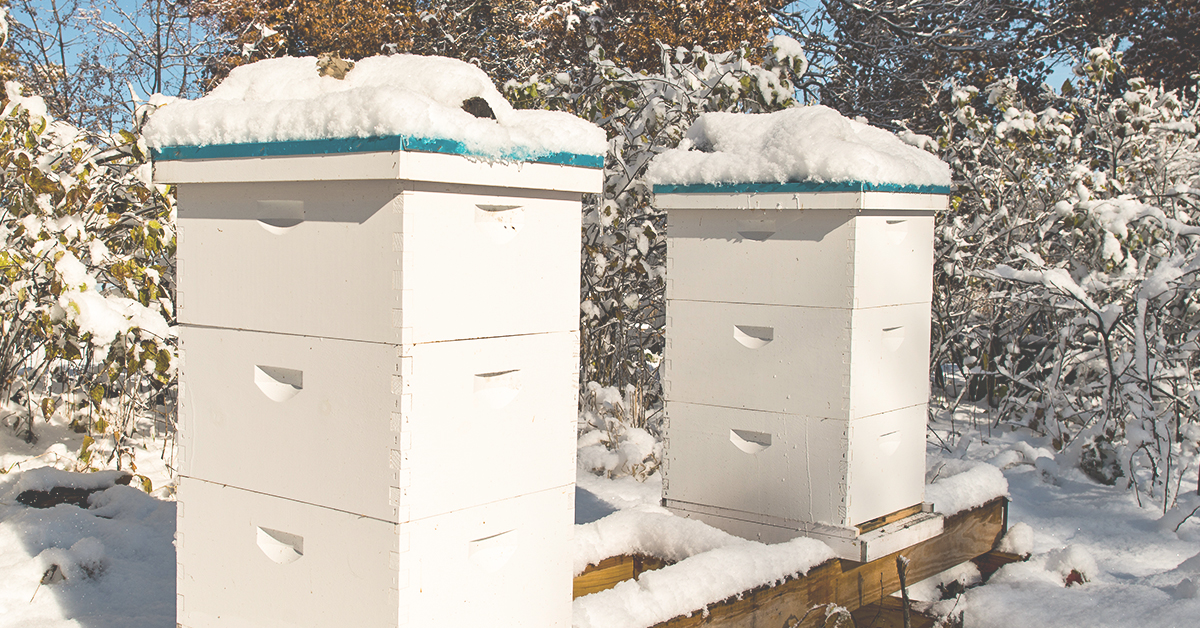
Believe it or not, winterizing your beehive is really a 12-month process.
Why? Because, by far, the most important aspect of winterizing any beehive is making sure your bees have the nutrition to survive the winter. And nutrition really starts in the spring.
Supplemental feeding throughout the year (but especially in the spring) does two things: (1) Provides the nutrition bees need heading into the winter, and (2) you help build needed weight on the hive. (You can make life easy on yourself by visiting an IFA Country Store as they have an entire nutritional line for honey bees, including pollen supplements, carbohydrates, candy boards and more.)
But, as winter quickly approaches, there are additional issues you can address before the snow flies to help keep your colony healthy throughout the cold months.
Get Varroa and Trachea Mites Under Control
First, you need to control the varroa and trachea mites. The varroa mite, which lives on the outside of the bee and reproduces in the comb, carries a variety of diseases harmful to the bees. The tracheal mite actually lives in the bee’s throat. It goes from bee to bee, clogging the breathing tubes of adult bees, blocking oxygen flow and eventually killing them. Controlling both of these mites is critical to ensuring a healthy hive next spring.
Mite treatments are easily executed. To make sure you’re doing what is necessary to prevent mite devastation to your hive, we suggest talking to be bee expert at your nearby IFA Country Store. They can show you exactly what steps need to be taken and in what quantity.
Make Sure Your Bees Have Adequate Food Stores
Secondly, you need to make sure your hive has enough food stores. In northern Utah, that means your hive will need to weigh at least 80 pounds (that includes the weight of the hive).
If you think your hive may be a little light in weight, simply get a candy board. This way, the bees will have plenty of food to get through the winter. And, if the bees don’t use all of the board, you can keep it and use it again next winter.
Control Moisture
Third, controlling the moisture in the hive is critical. Snow will blow inside any crack or hole in your hive and melt on the winter cluster. This creates major problems for the bees, as they use up more energy than necessary and makes it harder for them to survive.
Make sure your hive is well ventilated, so moisture can escape. At the same time, you need to protect your hive from the wind.
Prevent Mice
Finally, mice can be a problem for hives during the winter. Make sure you have mice bait underneath the hives (where nothing else can get to it). Mice like to live in and around hay bales. So, if you're using hay bales as a wind protector for your hive, this step is even more important.
Let Us Help
For more beekeeping tips, we provide bee classes at various times throughout the year in our stores. Visit your local IFA Country Store to see if there’s a class in your area.







